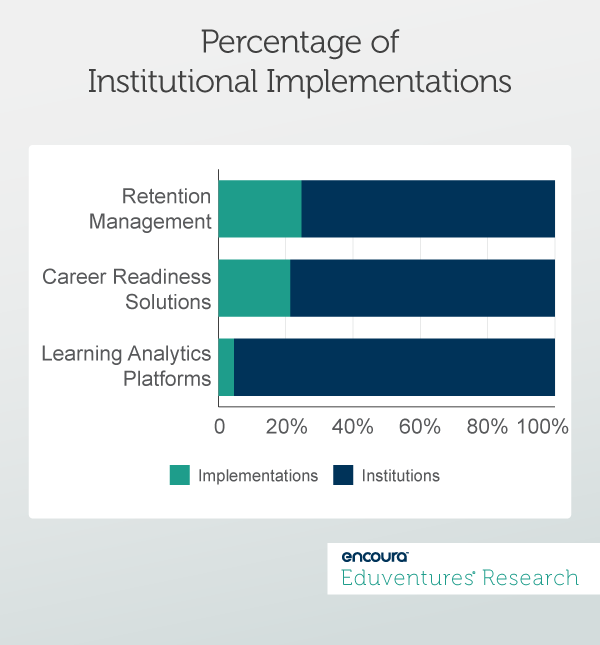When the topic of student success comes up at higher education conferences, you will nearly always see a room full of engaged attendees nodding their heads in approval. Who wouldn’t? Increasing student success is an important and worthwhile goal for any institution and almost every one has room for improvement.
In these sessions, however, it soon becomes clear—or rather, unclear—which type of “student success” the presenter is focusing on. The reason for this lack of clarity? Too many discussions of this topic do not parse out the exact meaning of “student success.” Do we mean career attainment, persistence to graduation, student achievement, or one of many others? Instead, we tend to collapse the different types under one umbrella and assume everyone is on the same page.
From a technological point of view, the impact of this lack of clarity is significant. The multiple meanings of the term make any attempt to determine which student success solution to acquire challenging. Compounding this lack of transparency is the growing number of technology solutions in the marketplace claiming to support different types of student success, such as career readiness solutions, retention technology, or learning analytics.
As a result, leaders too often select solutions to support student success based on one meaning of the term while they should have focused on a different meaning.
To help institutions make more informed decisions when choosing which student success technologies to implement, we established a partnership with LISTedTech, a firm that measures technology implementations at higher education institutions by mining external data sources. While the data cannot guarantee a 100% accuracy rate, it does allow us to answer questions such as: Which segments are popular? What products are institutions implementing the most? And, what are the technology trends in higher education?
Based on this data, future research reports will focus on segments of the student success marketplace, including career readiness, retention management, and learning analytics. Here is a brief overview of what you can expect:
Definitions
Let’s start by defining each of these segments. Notably, our definitions differ somewhat from how the marketplace determines them and may, therefore, cause confusion around the implementation data. In our Tech Landscape and other reports, we define these segments in the following ways:
- Career readiness solutions: Career readiness solutions allow college career services teams to assist undergraduate and graduate students in preparing for the workplace. Functionality includes course-competency mapping, access to counselors, mentors, and alumni, advice on career options, and resume building.
- Student Retention Management: Solutions that enable colleges to collect, monitor, and act on student data to improve retention. Functionality includes an “early warning system” for at-risk students, a forum for communication between advisors, faculty, and students, and methods to manage student academic interventions.
- Learning analytics solutions: Learning analytics solutions support education objectives by analyzing data related to student engagement and academic achievement. Functionality includes end-user ad hoc querying and reporting, data visualization, and data mining and analysis.
Key Findings
Figure 1 below shows the percentage of all institutions (two- and four-year, public and private) that are implementing one segment of the student success marketplace. Here are three findings from the data:
- Retention management is the most popular student success technology. It is not surprising to see that the implementations of these solutions are popular, as institutions face increasing pressures to improve student persistence and vendors position their products to improve retention.
- Interest in career readiness solutions is high. Institutions acquiring career readiness solutions may be responding to the increased national emphasis on higher education institutions to ensure that students successfully enter the job market, as evidenced by the Promoting Real Opportunity, Success, and Prosperity through Education Reform (PROSPER) Act.
- Learning analytics solutions are struggling to gain traction. Although the term “learning analytics” entered extensive usage in 2010, this segment still strives to achieve traction in higher education. This may change as institutions grapple with the identification of inputs, outputs, and intermediate activities that promote and ensure learning, especially around personalized and adaptive learning.
Figure 1
Future Questions
Going forward we will dive further into data, highlighting such questions as:
- Which specific solutions within each segment have gained the most traction in institutional implementation?
- What external pressures are driving implementation of specific segments?
- What downward pressures threaten to hinder the growth of implementation?
- Does the implementation picture look different within different sectors, e.g., two-year or four-year institutions, private or public?
- What are the implementation trends of each segment and what could we learn from them?
- Could we gain insight from this data into institutional preferences for student success technologies and how they might align to institutional student success priorities?
We look forward to sharing our findings with you.
Should you have questions about our approach and the implementation data, please reach out to your Client Research Analyst.
Thank you for subscribing!


